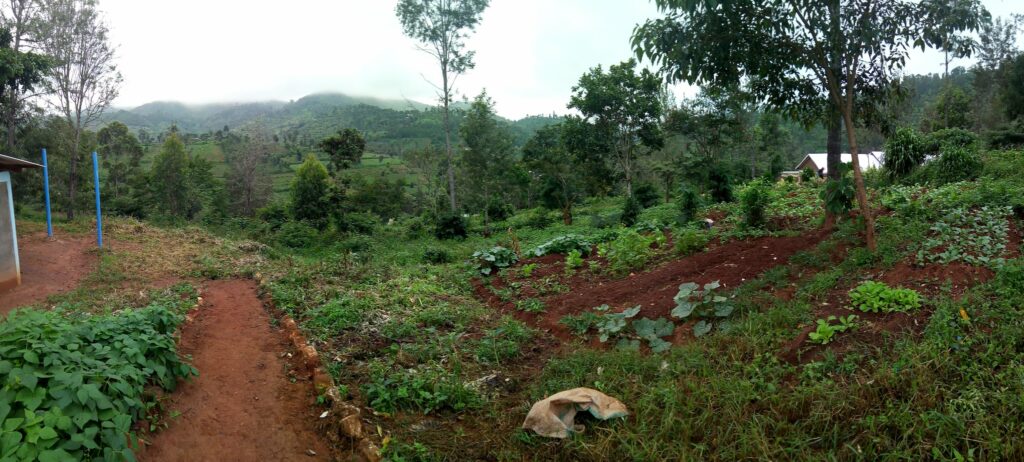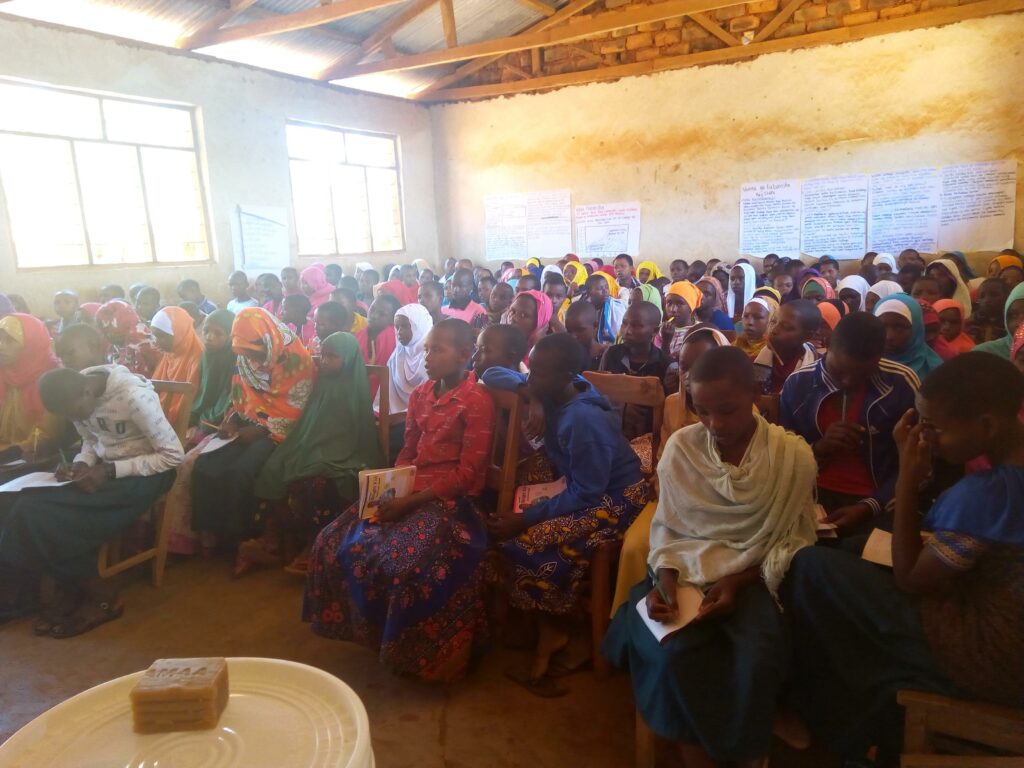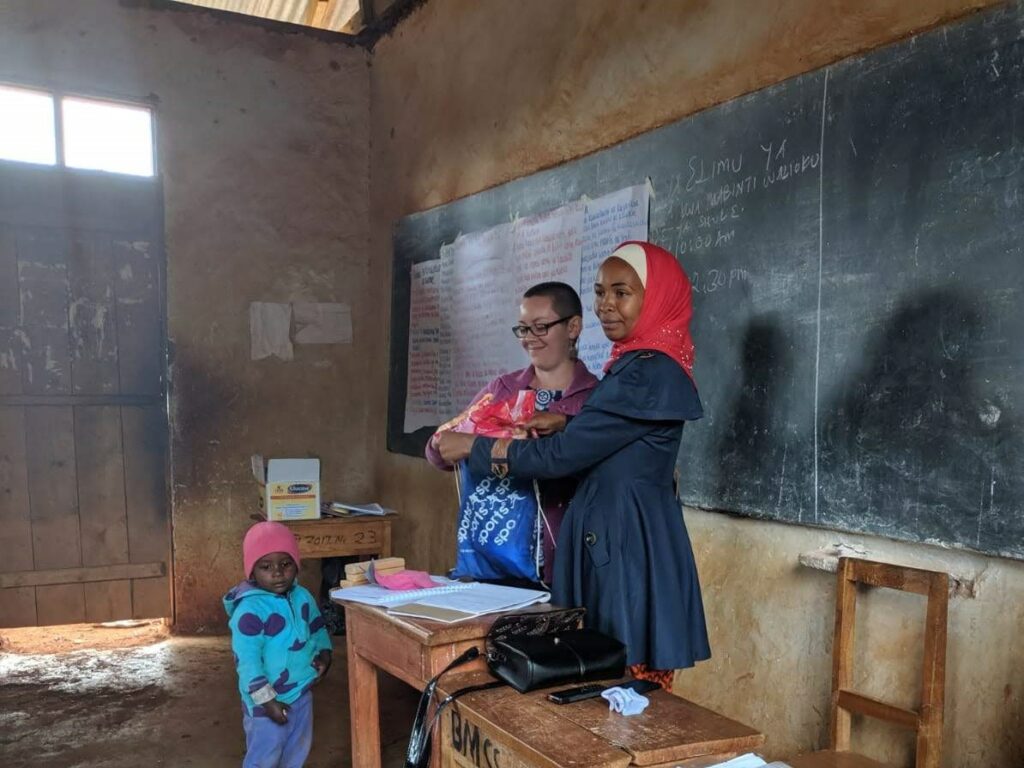Zoe Rosenblum, 2nd Year Geography PhD Student

“Go build partnerships.” This is the assignment that I received from my advisor when our collaborators invited us to tour our study area and present a joint session at the WaterNet 2022 Conference in South Africa.
My advisor could not make it because he had to meet with the Dalai Lama (what an excuse!).

My journey started with the 1:50 AM Groome shuttle to PDX on October 4. Too many hours later, after risking health on flights that no longer require passengers to wear masks, I arrived in Johannesburg, South Africa at about 6:30 PM local time on October 5. I was greeted at the airport by a young man holding a sign with my name on it, and we discussed foods, languages and jobs on the short drive to my hotel in Pretoria. The hotel lobby was crowded by a Mozambican youth gymnastics team who had a competition nearby. I checked in with ease and then, too tired to eat, showered and headed to bed with the lullaby of cars honking melodically to the beat of the music blasting at the corner market.

My first day in the country, I walked to our partners’ offices and was delighted to find that Global Water Partnership and International Union for the Conservation of Nature, the two organizations I work with on a transboundary rivers project, have offices side-by-side in the same building. They hosted a delicious lunch catered by a local restaurant, as a way of welcoming their partners (colleagues also joined from IUCN Headquarters in Switzerland). As soon as we sat down to eat, the ideas started rolling out:
“You must not let my colleague forget to tell you about our idea to send students from the basin to study at OSU.”
“Can we publish a book on the basin?”
“You must come back again and bring Aaron.”
So, on Day 1 I learned the hospitality of my hosts, the importance of meeting in-person to informally discuss project ideas, and the cultural significance of eating in someone’s home (or office) before discussing business.

The next day, seven of us flew from Johannesburg to Harare, and then drove in two rental cars to Mutare, the third largest city in Zimbabwe, a few kilometers from the border with Mozambique. Here we had two packed days of touring the transboundary basins through the eyes of the Catchment Managers and Hydrologic Engineers that work for the Zimbabwe National Water Authority. There are three river basins we focus on: the Buzi, Pungwe and Save Basins, known together as the BuPuSa Basin.

Perhaps I should take a moment to recognize that I am a geographer with a captive audience. Check out this map! River basins are outlined in dark blue. Notice how they pay no mind to the very straight dashed black lines that denote country borders? European colonizers generally did not consider ecosystems when drawing country borders. The work of transboundary water cooperation is to bring together countries that share water resources to share the burdens and benefits of water management. The BuPuSa Basin spans Mozambique and Zimbabwe. The project with GWP and IUCN centers around strengthening capacity of the two countries to establish protocols for sharing data, water, and more.

From Mutare we drove south to the Save River, where we observed low flows (it was the end of the dry season) and sedimentation. It’s hard to imagine the flooding event described by engineers which washed away eight bridges in the basin. Much of the basin tour focused on visiting places where the floodwaters washed away monitoring equipment, bridges, and even houses and humans.

Two key observations of the river. The obvious one was the heavy siltation and turbidity, caused by illegal gold panning upstream. The second observation was not so obvious to me. This part of the river looks like many in Oregon – a river channel dotted by boulders. However, in Oregon, the boulders were washed down by the Missoula Floods. In Zimbabwe, such a site is unusual. The boulders were washed down river by floods in the wake of Cyclone Idai. With the floodwaters, houses and hundreds of people were washed away as far as into Mozambique.
Project partners in the basin are improving monitoring and developing early warning systems for such flooding. Now, water level dataloggers send an automatic alert to an engineer’s phone when certain flow thresholds are reached, and the engineer then alerts a WhatsApp group that includes engineers on the Mozambican side to warn of flash flooding potential. These dataloggers are located at multiple sites, so the engineers can measure how fast the floodwaters are moving. Improvements may include a more reliable battery/power system for the dataloggers, raising awareness about flood risk and preparedness, and installing flag systems to communicate river level and flood warnings.
The next day we traveled north to the source of the Pungwe, where, we were told, the water is clean enough to drink. My observation of the surrounding monocultures of banana, avocado and macadamia left me skeptical of this statement, but I did reach down and touch the water, and could certainly imagine cooling off in the river on a hot day.



After a week of tours and meetings in Zimbabwe, we returned to South Africa for our engagement at the WaterNet Conference. The conference presents research and projects from across the Southern African Development Community, drawing together policymakers, academics and practitioners. Our session reflected on the use of data in transboundary water negotiations. Highlights of our session included engaging keynote addresses from Dominic Mazvimavi, Professor Emeritus at the University of the Western Cape and Professor Melissa McCracken from Tufts University, an insightful panel discussion, a presentation of the Transboundary Freshwater Diplomacy Database by CEOAS Ph.D. candidate Alexandra Caplan, and stories of data challenges in the BuPuSa Basin from Mr. Elisha Madamombe, Regional Coordinator for the BuPuSa Project at GWPSA. You can learn more about this topic in a blog about our online training with GWP, which we held the morning after my return to the US.


There were many more aspects of the trip I would love to share. The observation that informal environments often are the best for productive discussions. How well my partners took care of me in the region – Pinnie guiding me through a questionable border crossing, Tariro stopping every 20 minutes for me to vomit on a long drive when I had food poisoning, Cebo making all of my transitions between hotels and airports as easy as possible. Ask me anything. I’ll leave you with these photos of South African wildlife and signage about water:
























